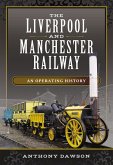An "extraordinarily informative and profusely illustrated" history of how a town built a railway, and a railway built a town (Midwest Book Review). On September 27, 1825, the first public railway steam train left New Shildon for Stockton-on-Tees, England. The driver was George Stephenson and the engine he was driving was the "Locomotion No.1." It set off from a settlement that consisted of just a set of rails and four houses, none of which had been there a year before. The four houses became a town with a five-figure population, a town that owed its existence to the railway that made its home there-the Stockton and Darlington (S&DR). Some of the earliest and greatest railway pioneers worked there, including George and his son Robert; the Hackworth brothers, Timothy and Thomas; and the engineer William Bouch. Their story is part of New Shildon's story. The locomotive works, created to build and maintain steam locomotives, morphed into the world's most innovative works, whose demise had more to do with politics than productivity. This book covers Shildon's years between 1820 and today, including the war interludes when the Wagon Works was manned by women and the output was mostly intended for the Ministry of Defense. The story of the creation of the town's railway museum and the arrival of Hitachi at Newton Aycliffe brings the history up to date and, to complete the picture, there is also a description of the ongoing new build G5 steam locomotive project on Hackworth Industrial Estate, the very site where the S&DR locomotive and wagon works was located. It is the story of a railway town-and also the story of the people who lived there and made it what it is today.
Dieser Download kann aus rechtlichen Gründen nur mit Rechnungsadresse in A, B, BG, CY, CZ, D, DK, EW, E, FIN, F, GR, HR, H, IRL, I, LT, L, LR, M, NL, PL, P, R, S, SLO, SK ausgeliefert werden.









